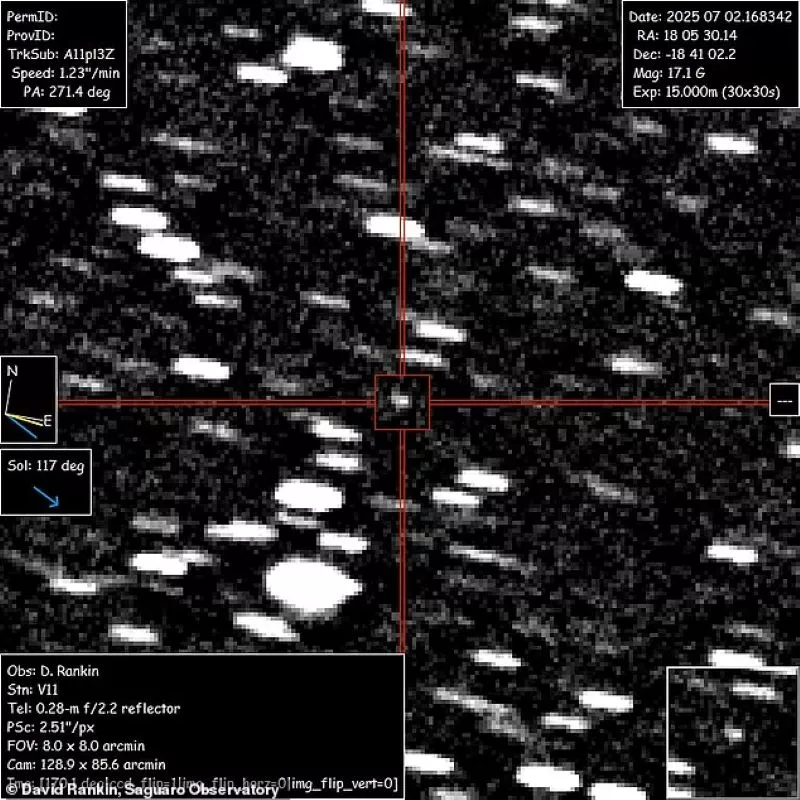A mysterious object other than our solar system was once identified by astronomers heading to our planet.
Harvard physicist Avi Loeb revealed that the “interstellar object” is expected to pass from Earth on December 17thcrossing the solar system at a speed of 41 miles per second (about 150,000 miles per hour).
This means that this unknown object, which scientists initially named A11PL3Z and now; After confirmed its interstellar origin is called 3i/Atlas, moves very quickly to catch the gravitational attraction of our sun, or any other planet.
In fact, 3i/Atlas is only the third confirmed object beyond our solar system.
Interstellar Visitor Confirmed. #A11PL3Z is now knight as 3i/Atlas. It is only the third confirmed object from beyond our solar system. pic.twitter.com/jlsrrxuzpg
– Tony Dunn (@tony873004) July 2, 2025
Confused scientists for his identity
The unusual course and speed of the A11PL3Z was first identified by astronomer Sam Deen at the end of June, however, as soon as it was highlighted by the International Astronomical Union after its interstellar origin was confirmed.
According to the Daily Mail, Loeb believes that A11PL3Z – with a width of about 19 kilometers – It could be a large space rock or a comet, but astronomers are still concerned and confused about its identity.
Its size makes it larger than the last two “interstellar” objects that passed through our solar system, Oumuamua – the first recorded such object – and Comet Borisov.
Like Oumuamua in 2017 (which scientists discovered that the unknown comet or asteroid), so the A11pl3z could soon start causing more theories about its “extraterrestrial” origin, that is, the fact that it is anthropogenic object and was sent here by another life system.
“It was argued that he was in disk shape and that he had a non -gravitational acceleration, which raises the possibility of artificial origin,” Loeb wrote in his article on Oumuamua.
In 2021, Harvard Professor Frank B. Baird Jr., expressed the theory that Oumuamua could “be intended for signal scanning from all viewing directions”, looking for sensors from a lost receiver previously placed on Earth.
When will A11PL3Z reach our solar system
If the object A11PL3Z is actually a space rock, it is amazingly bulky compared to the other two interstellar objects that have passed through the Earth.
However, scientists do not believe that A11PL3Z is a threat to the Earth as they do not predict that it will approach our planet.
According to their calculations, in its current orbit, it will approach 2.4 Astronomical AUu (223 million miles) from Earth.
Technically, A11PL3Z is already in the solar system and is currently 3.8 au away from Earth
Its nearest passage is expected to take place in October, approaching 0.4 AU (37 million miles) from Mars.
Source :Skai
I am Terrance Carlson, author at News Bulletin 247. I mostly cover technology news and I have been working in this field for a long time. I have a lot of experience and I am highly knowledgeable in this area. I am a very reliable source of information and I always make sure to provide accurate news to my readers.












